Communication Materials
Pieces intended to promote and instruct others, internally and externally, about your school/unit. (Ads, brochures, one-pagers, magazines, etc.)
Guidelines
1. Must include institutional logo.
2. Must use brand fonts and primary colors.
3. Cannot include Athletic logos.
- When using the university name in a design, never put “The” before “University of Georgia.”
- When using the university name in a sentence, never capitalize “the” before the university name.
Stationery
The university logo is used on letterhead, envelopes, mailing labels and business cards. Departments and units should be inserted in the designated areas for each option. Small note cards and note pads intended for personalized, hand-written correspondence may use top-level or department-level logos.
Letterhead
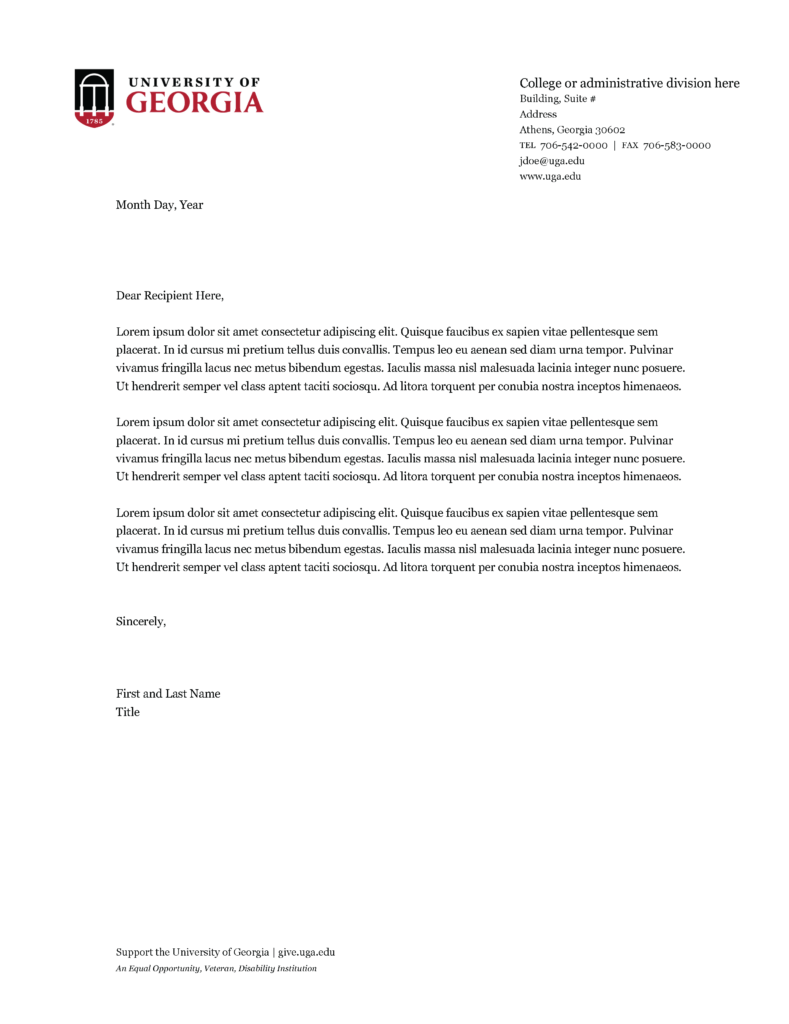
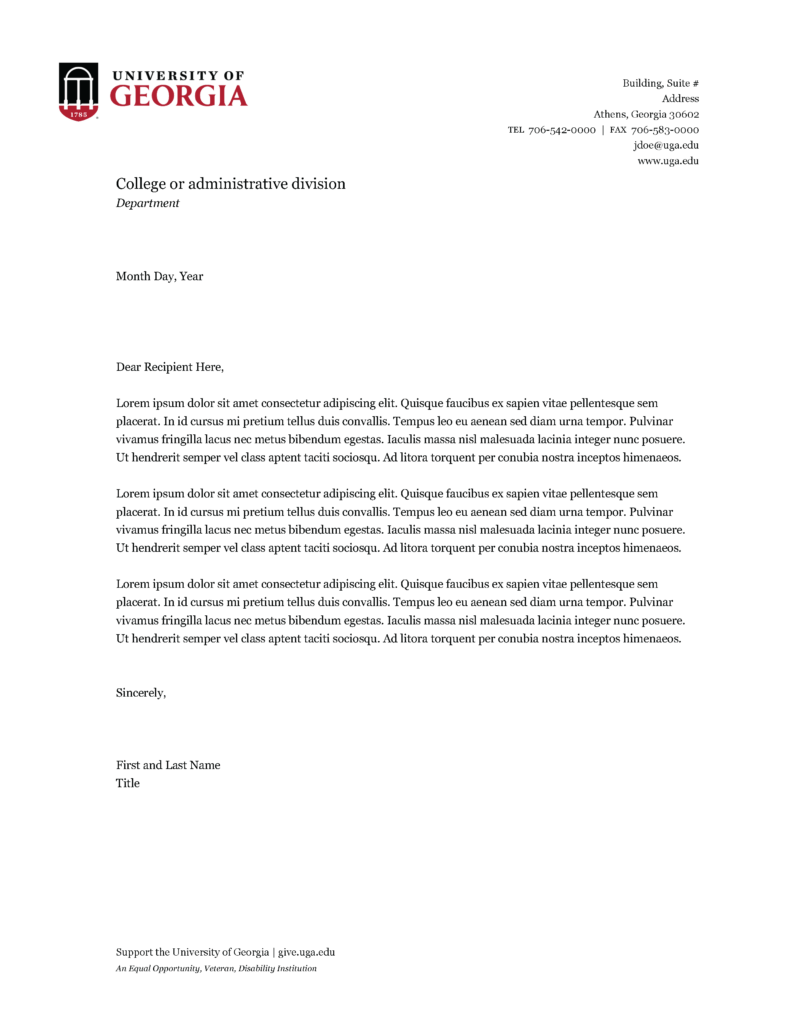
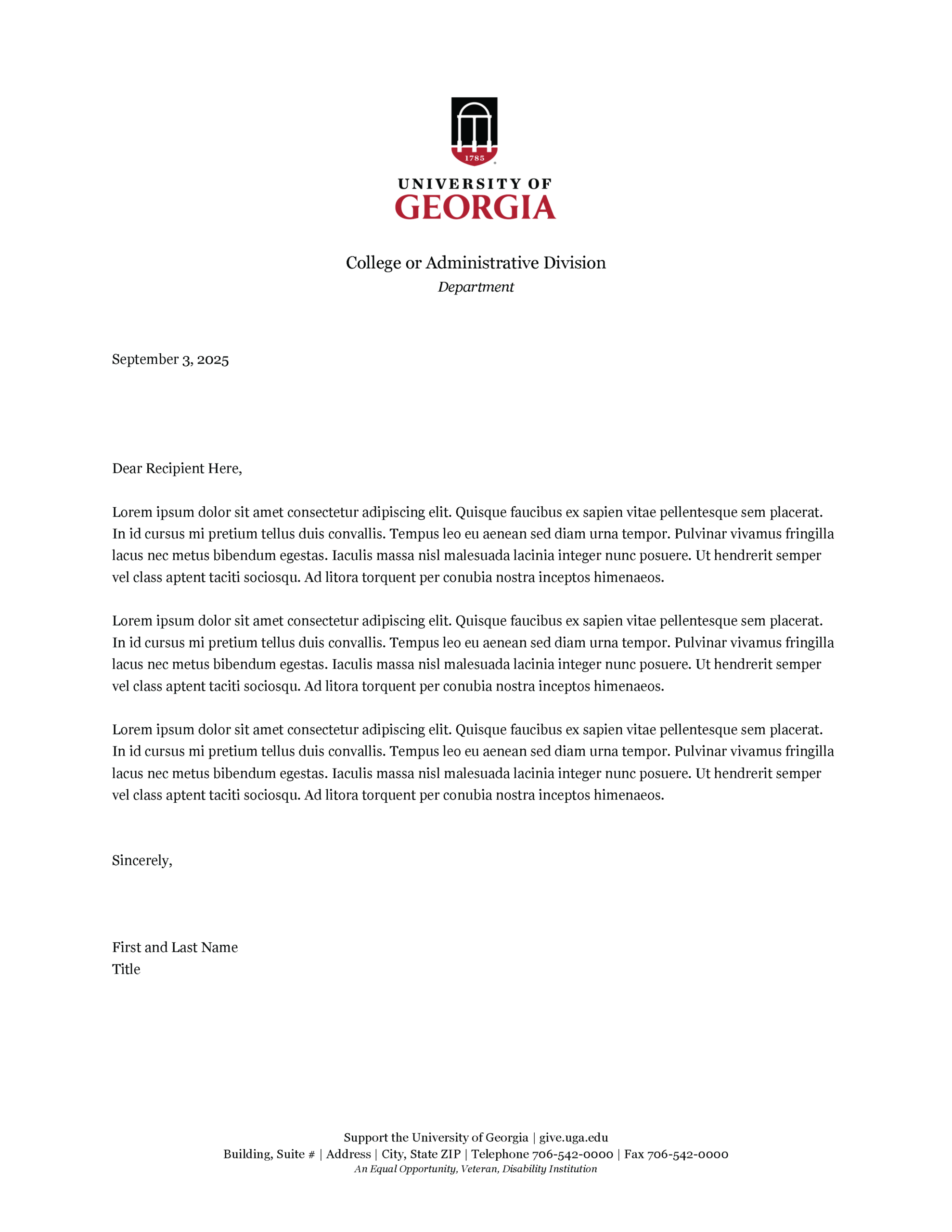
| Stock | Color | Finish |
| Neenah 24 lb. Classic Crest® | Avon Brilliant White | Smooth Eggshell |
digital Letterhead templates
Digital versions of the letterhead templates can be customized and printed as needed. Type should be set in 9 pt. Georgia Regular at 14 pt. leading.
business cards
Business cards must be obtained from either Bulldog Print + Design or Tate Print & Copy Center. On the front, information blocks can be taken away if not needed, but extra information cannot be added. Any extra information can be added to the back.
If students want a university branded business card, there is a special business card template available that is black and white and denotes their student status. No extra information can be added, front or back, beyond what is provided.
Letterhead, envelopes, labels, and business cards can be ordered from Bulldog Print + Design and Tate Print & Copy Services.
powerpoint templates
There are several different PowerPoint templates that are available for your use. Each one has a different style and feel, so look through them all to see which one fits your needs the best. You are also allowed to make your own as long as they follow our brand guidelines.




embedding fonts in powerpoint
It can be difficult to use some of our brand fonts in PowerPoint presentations since different computers may not have the same fonts installed. To avoid this, you can embed a font in the presentation.
- On the application menu, select Preferences.
- In the dialog box, under Output and Sharing, select Save.
- Under Font Embedding, select Embed fonts in the file.
- Embed all characters in a font so others can edit or present the file.
Brand USAGE EXAMPLES
SWAG
SWAG – apparel, merchandise, and promotional items that are obtained through an approved vendor. (Clothing, drinkware, bags, notebooks, etc.)
Guidelines
1. Promotional items larger than 2″ must include an institutional logo.
Due to space constraints, stickers that are illustrative or message-based, such as those created for campaigns, events, or general engagement and do not represent the university or its units, may be exempt from the logo requirement.
2. Artwork cannot include:
- the institution’s name,
- the unit’s full name,
- or anchor words such as “school,” “college,” “center,” “lab,” “department,” etc.
Artwork using these names creates a modified logo, which is prohibited. The official logo of the unit mentioned in the artwork must be used.
Exception: The use of the names above may be used in artwork within a phrase (e.g. “Welcome to Georgia”).
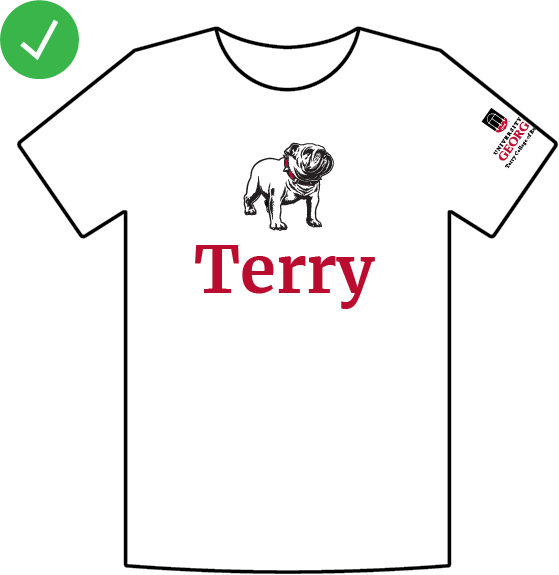
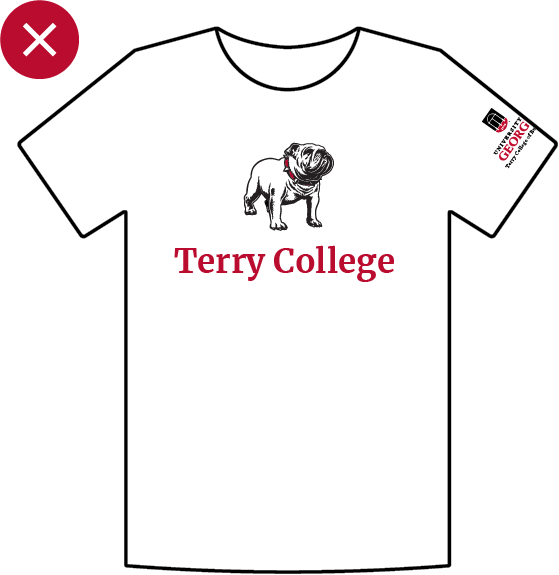
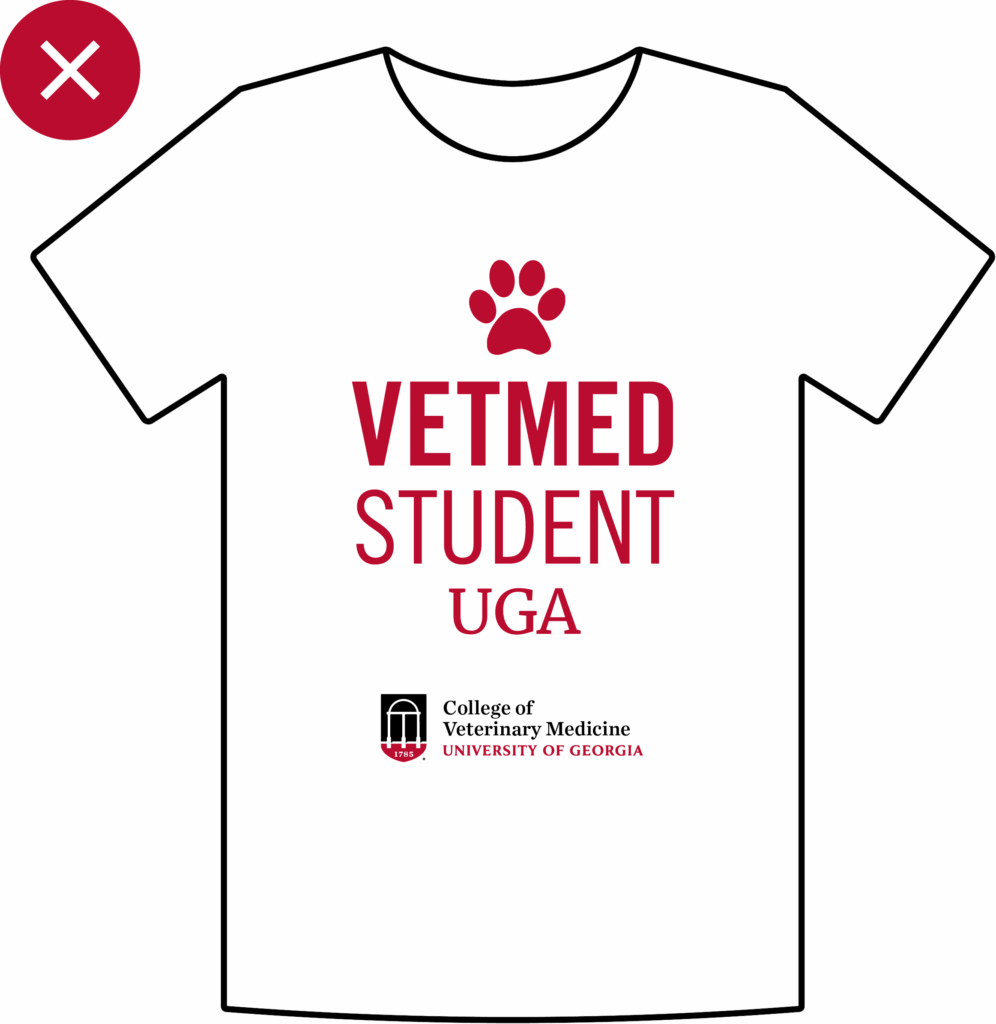
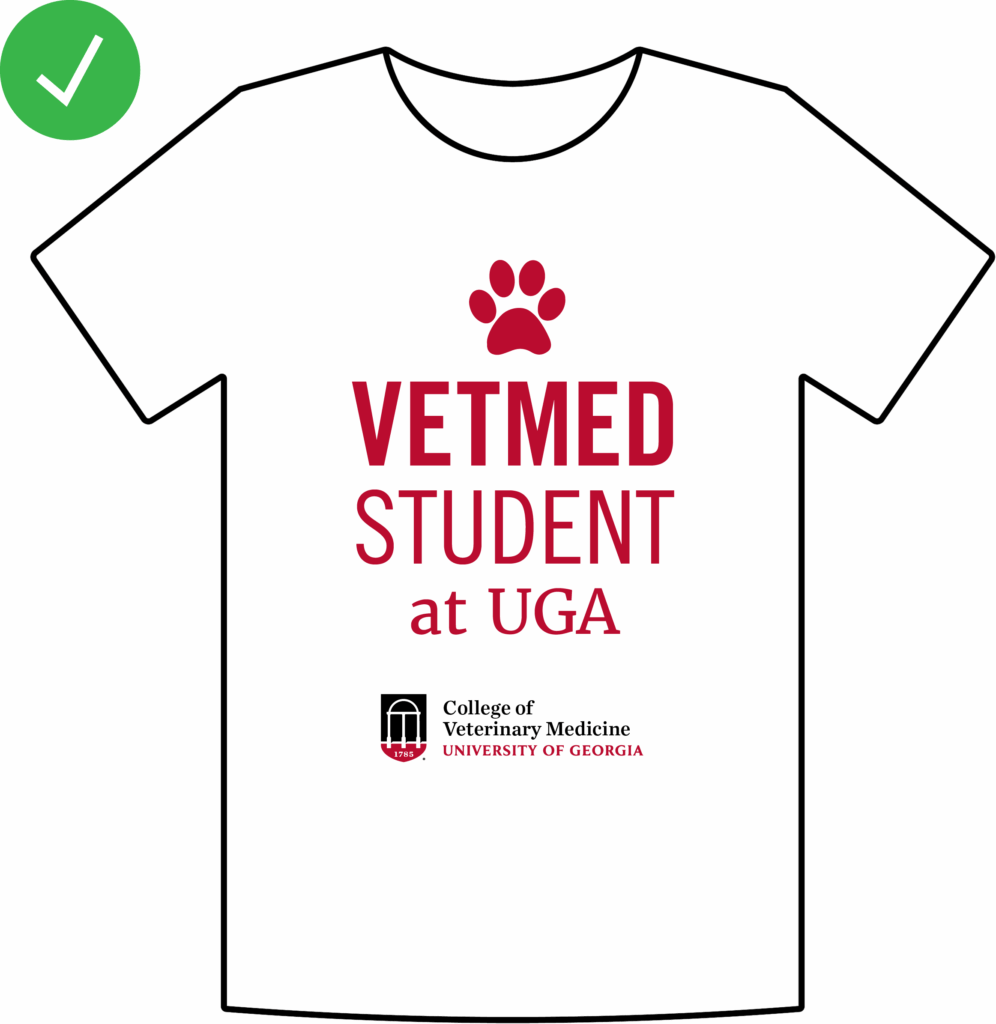
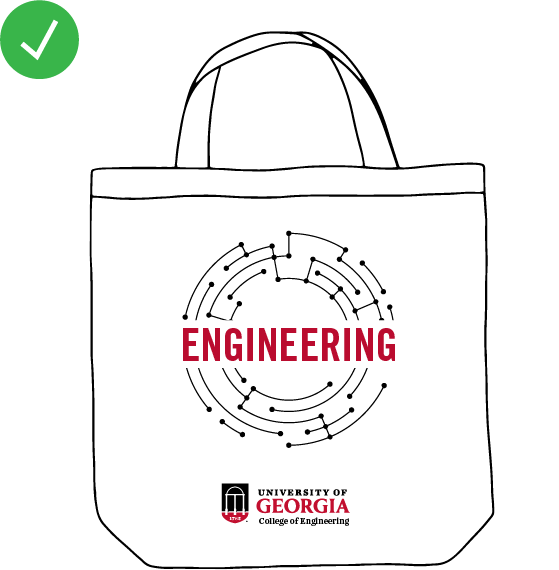
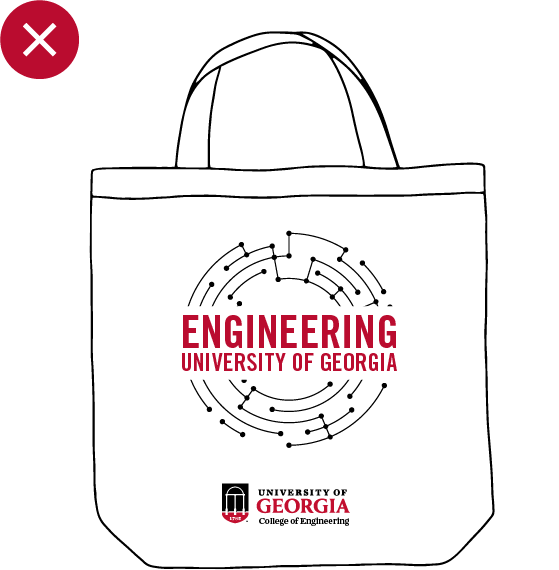
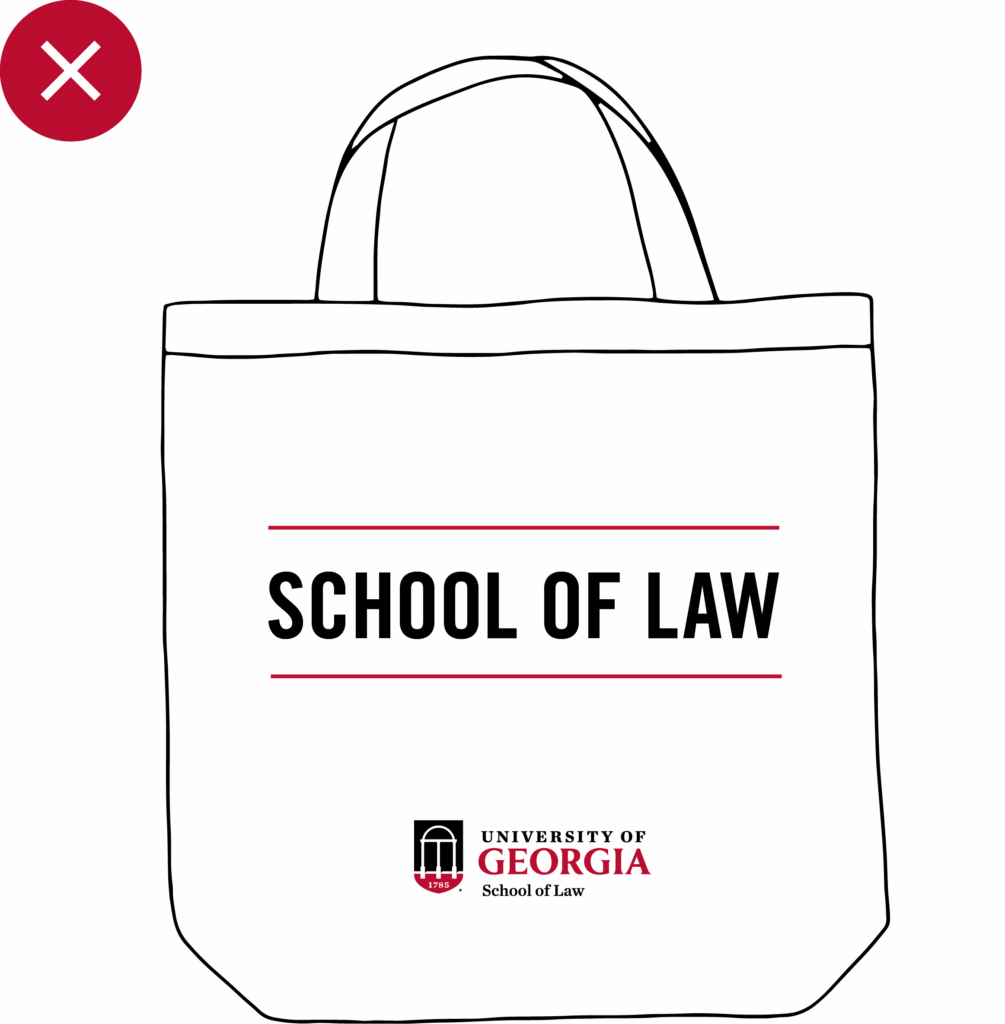
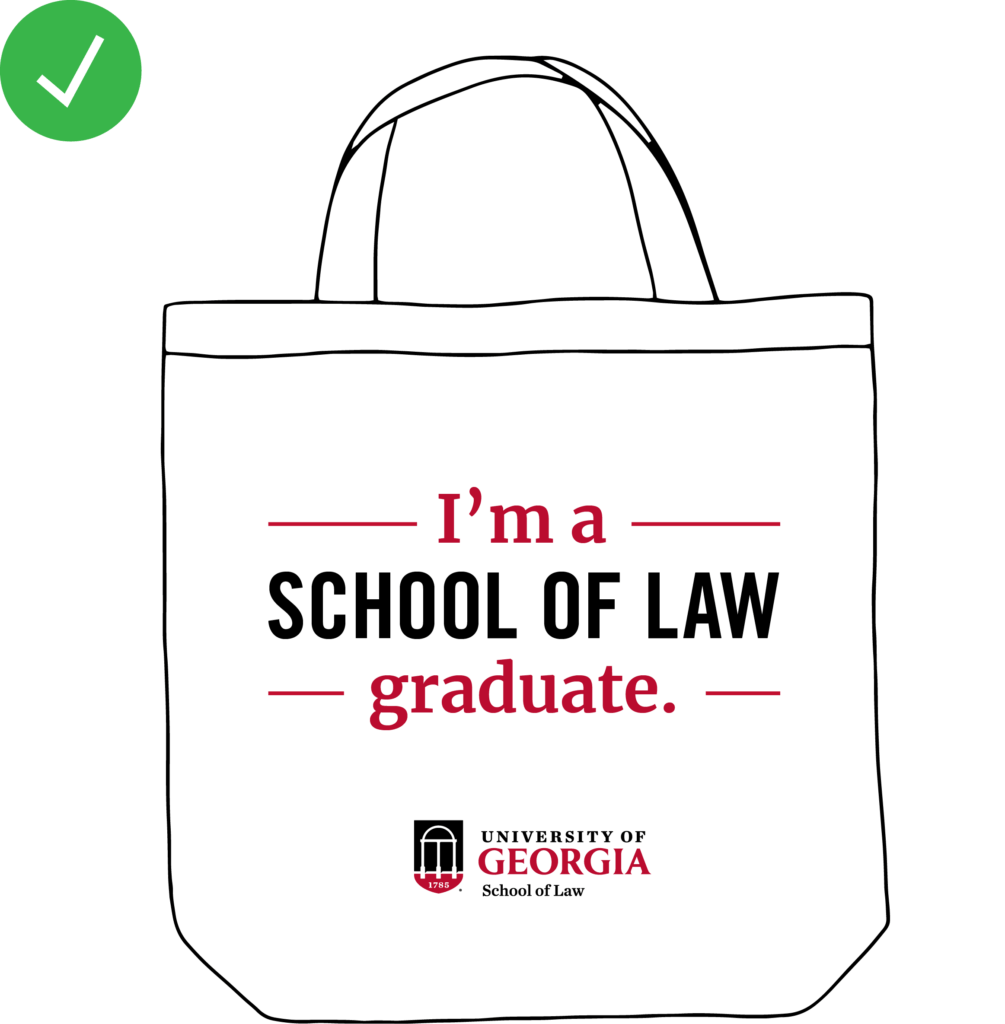
3. When using multiple logos, academic units must lead with their official logo, placing other logos in a secondary position.
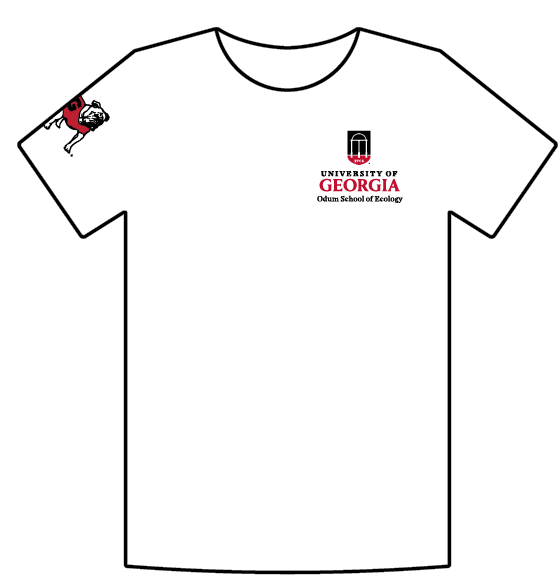
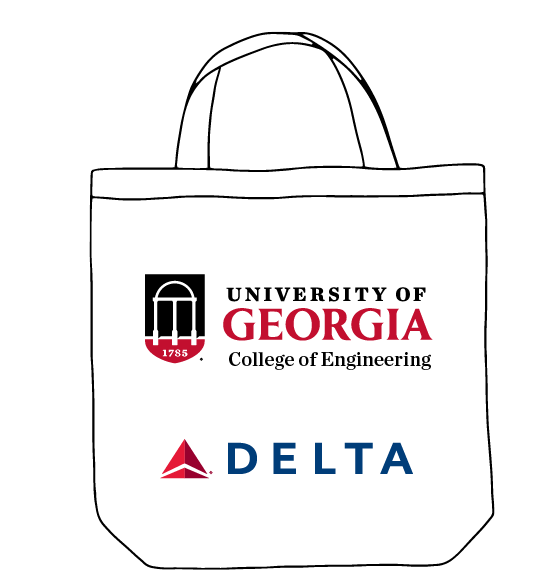
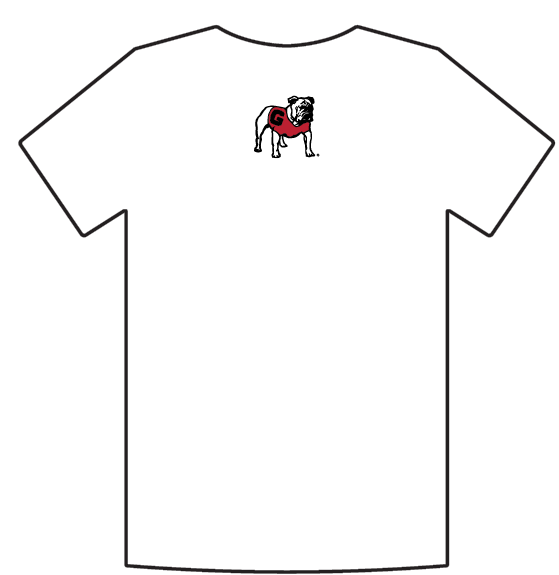
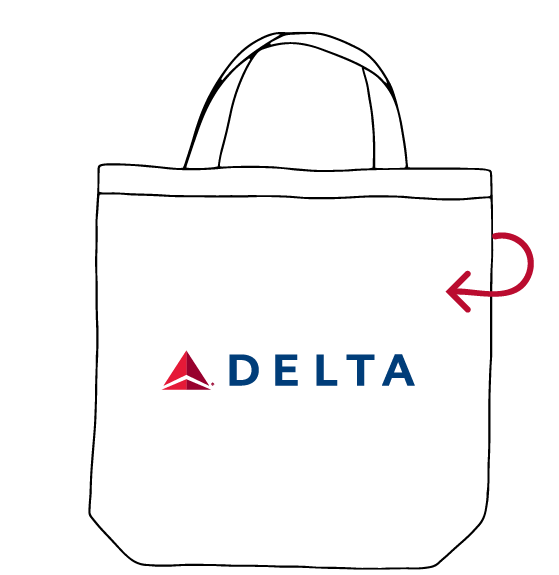
- When using the university name in a design, never put “The” before “University of Georgia.”
- When using the university name in a sentence, never capitalize “the” before the university name.
Logo, Artwork, Plain Text
When designing a promo item, here are some distinctions between different design elements.
Logo
When referring to anything within University of Georgia, “logo” refers to the official shield logo that is made by the Division of Marketing and Communications. Any design that isn’t an official UGA logo is considered “artwork.”

Artwork
We allow for unit’s to create graphics to design their promo item with as long as it follows the guidelines above. It should not look like you are rebranding your unit or creating a modified logo. This should never become a representation of you.
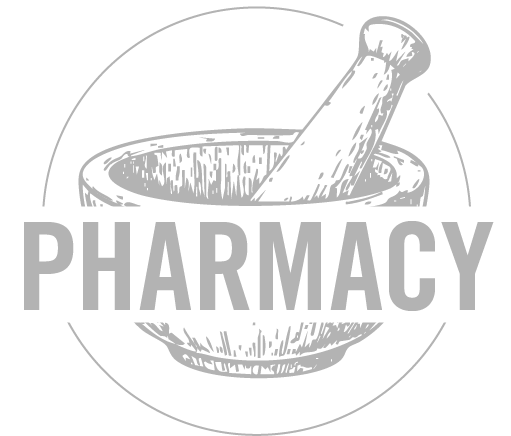
Plain Text
The institution’s name and the full name of the requesting unit cannot be combined with a graphic (which makes it into a modified logo), but they can be written out solely as text.
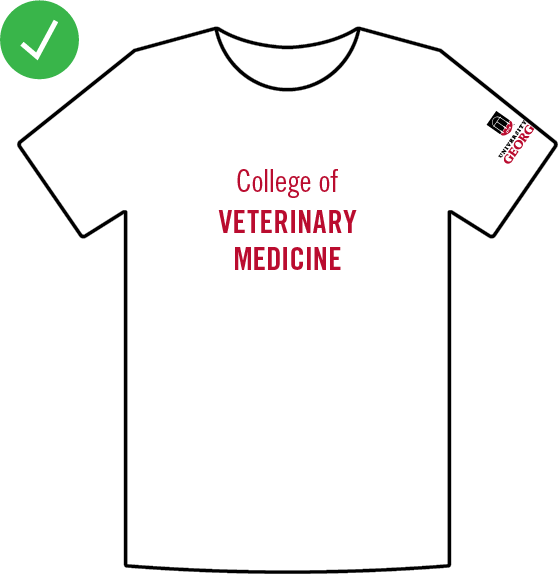
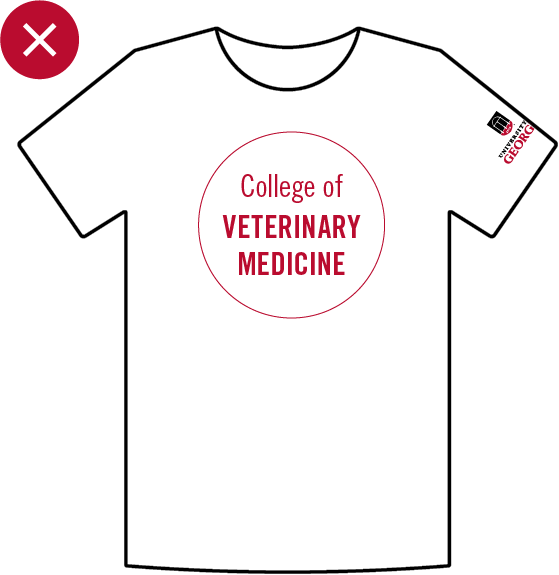
- Do not resize or remove the logo’s registered trademark symbol. When putting a logo on a promo item that is getting embroidered, embossed/debossed, is metal, or is small, it is okay if it the registered trademark symbol is hard to read.
- Brand fonts and primary colors are recommended when designing SWAG.
Special configurations for limited imprint area
If none of the logos in your official logo set can’t fit the imprint area, check out the special configurations page to see if there are any options you may qualify for. Contact your logo liaison if a special configuration is needed.
Brand USAGE EXAMPLES
Work Apparel
These guidelines apply to all departments responsible for producing, ordering, and/or distributing workplace apparel. All apparel must reflect and reinforce the university’s brand identity while maintaining consistency across all campuses and operational units.
Any item featuring university trademarks must be reviewed and approved by the Division of Marketing and Communications before production. For detailed policies and procedures, visit the Trademarks section.
Uniform Style Shirts
Official work uniforms, such as polo shirts, button-ups, pullovers, and jackets, issued to staff in professional or client-facing roles must adhere to the following standards:
Color Usage
- Apparel fabric must closely match the primary or neutral brand colors defined in the university’s brand and visual style guide.
- Exceptions are limited and must not conflict with visual identity standards.
- White or neutral fabric equivalent to Chapel Bell White, Stegeman, Creamery, Odyssey, or Sanford requires the full-color logo to ensure proper visibility and brand representation.
Logo Placement
- The appropriate university logo must be prominently displayed and positioned according to approved placement standards, typically over the left chest, unless obstructed by a pocket or clothing brand name.
- Always follow approved brand guidelines when using a university logo alongside an affiliate or partner organization’s logo. In some cases, the logos may appear side by side as a co-brand, with the university logo staying primary. In other cases, the affiliate or partner’s logo should be placed in a secondary position, such as on a sleeve or the back of the garment.
T-shirts and Sweatshirts
T-shirts and sweatshirts can serve as uniforms for staff and student employees representing the university in informal, event-based, or field-based roles. These garments must adhere to the same color usage and logo placement standards described above in the uniforms section.
Additional Design Elements
- All artwork and/or graphic elements must be directly related to the associated program, facility, or official university event.
- Such designs must also follow the guidelines outlined in the SWAG section.
Safety and Trade Apparel
High Visibility Safety Apparel (HVSA)
For roles requiring high-visibility garments (e.g., facilities, transit, groundskeeping), apparel must:
- Comply with OSHA and ANSI/ISEA 107 standards for high-visibility safety apparel.
- Use approved safety colors when mandated by job function or regulation.
- Feature a single-color logo (black or white) for visibility, placed so it does not obstruct required reflective zones as outlined in ANSI standards.
Trade Specific Apparel
For technical, mechanical, culinary, custodial, or lab roles:
- Fabric and color choices may prioritize durability, stain resistance, flame resistance, or other practical needs.
- Non-standard brand colors are allowed only when justified by job-related requirements.
- University logos must remain visible, correctly placed, and adapted for contrast if used on darker or specialized fabrics.
Environmental Graphics
Interior signage and environmental branding play a vital role in reinforcing our institutional identity and enhancing the on-campus experience for students, faculty, staff, and visitors. When thoughtfully executed, these elements contribute to a cohesive and engaging environment that reflects the university’s values and visual identity.
Guidelines
1. All design elements, such as typography, color, photography, and graphic components, must align with the standards outlined on the university’s official brand site.
2. All designs should enhance the user experience and support wayfinding, storytelling, or campus engagement.
3. Signage must meet accessibility requirements (e.g., ADA compliance).
4. Use materials and finishes appropriate for long-term display in high-traffic areas.
Planning and Approval Process
To ensure consistency with university branding and design standards, all interior signage and environmental graphic projects must follow the steps below:
1. Initial Design Review: Use the Request for the Use of Trademarks and Logos to submit the project description and artwork to Marketing & Communications for brand alignment review.
2. Coordination with University Architects: Marketing & Communications will coordinate with the Office of University Architects as needed to ensure the project aligns with campus design and construction standards.
3. Trademark Approval: After receiving brand approval, final artwork must be submitted for trademark and usage approval if it includes university logos, wordmarks, or other protected brand elements.
clear backgrounds
When installing vinyl signs on clear, translucent, or opaque backgrounds, the White (W) or Color White (CW) logos tend to look the best.
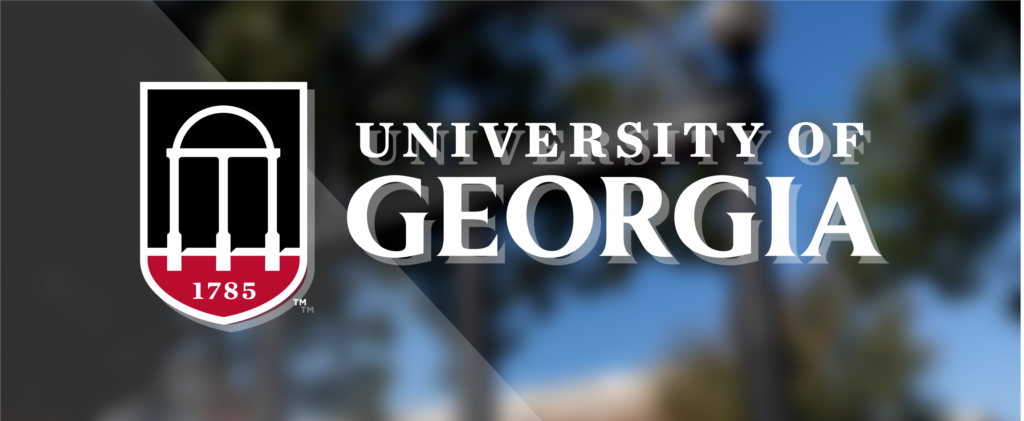
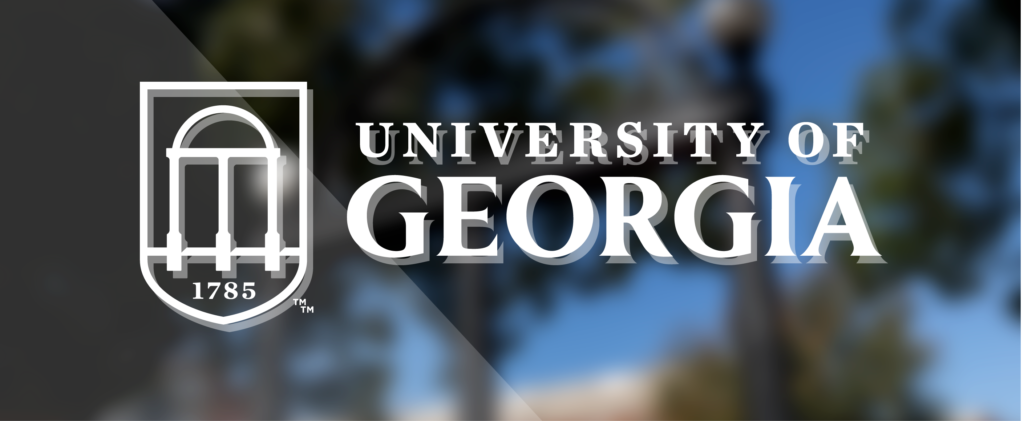
When using the Georgia Top Shield (GTV) configuration, the white holding shape extends to encase the Georgia wordmark.
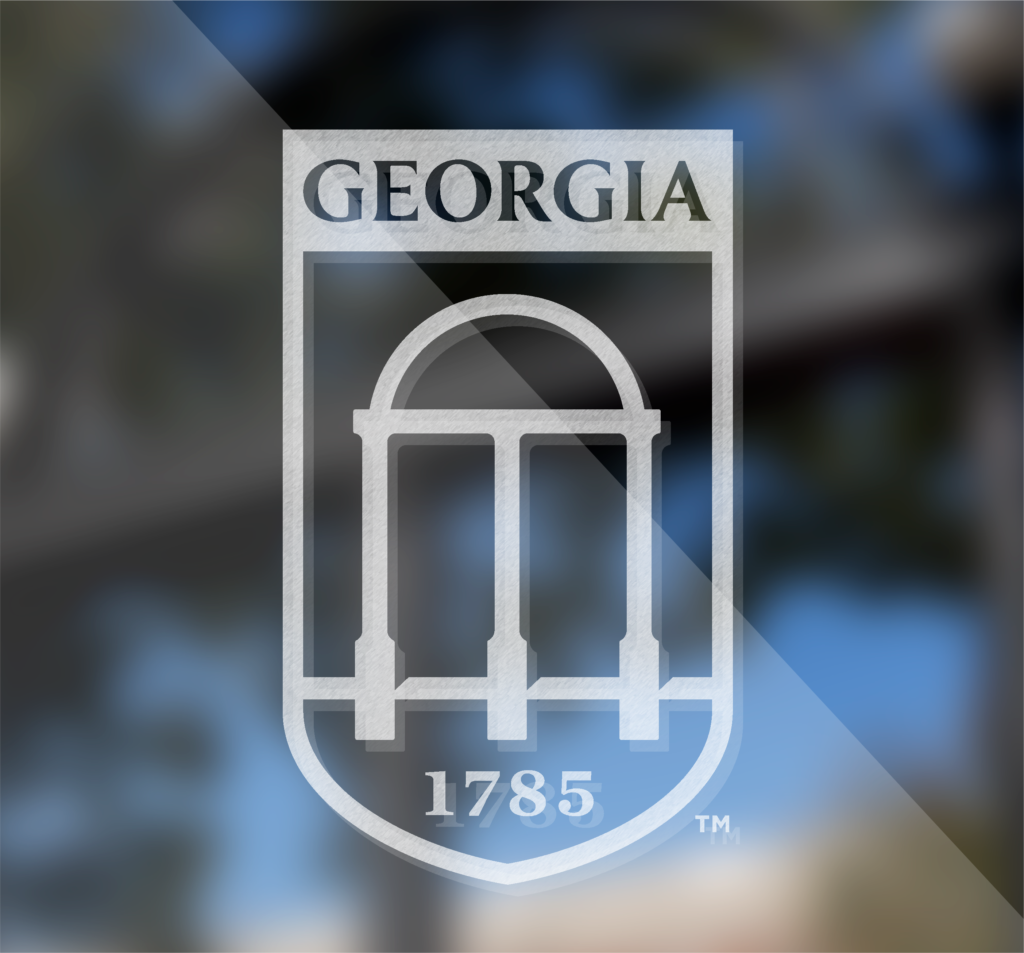
Vehicles
To maintain a unified presence across campus, the university logo is used on vehicles. Departments and units should be identified separately in the bottom area of the driver and passenger’s door panels.
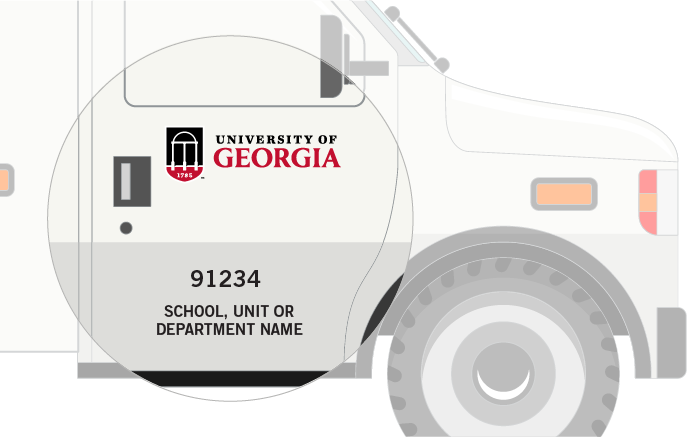
Specifications
Logo
Configuration: University Formal Full Color (GEORGIA-FS-FC) for white vehicles, University Formal Reversed Color + White (GEORGIA-FS-CW) for non-white vehicles
Size: 21.75″ W
Placement: Centered in top door panel area above side molding, driver and passenger sides
Vehicle ID
Font: Trade Gothic Bold No. 2
Letter Height: 2.5″
Placement: Centered in bottom door panel area below side molding, driver and passenger sides
Department Name
Font: Trade Gothic Bold No. 2; all caps
Letter Height: 1″ – 2″
Kerning: No less than −25
Placement: Centered under vehicle ID
contacts
Carol Vansant
Graphics Supervisor, Grounds Department Sign Shop
(706) 542-7549
cvansant@uga.edu
Brett Ganas
Director, Grounds Department
(706) 542-3684
wbganas@uga.edu










